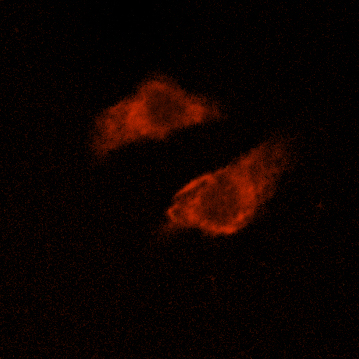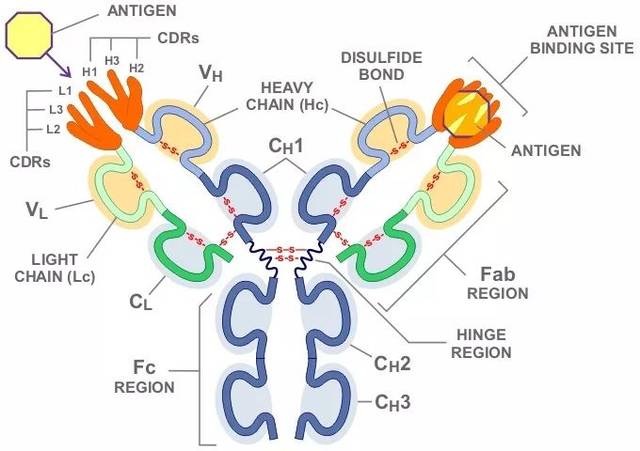Product Name :
GPR91 (A135) polyclonal antibody Background :
GPR91 (formerly known as P2U2) is a G protein-coupled, dicarboxylic acid succinate receptor. It has a high level of expression in the kidney, predominantly in the proximal tubules, and localizes to the plasma membrane. It has also been found at low levels in the liver and the spleen. GPR91 functions as a citric acid cycle intermediate succinate receptor. Two signaling pathways result from GPR91 activation, the pertussis-toxin-sensitive Gi/Go pathway and the pertussis-toxin-insensitive Gq pathway. Four amino acid residues are necessary for GPR91 activation by succinate: Arg 99, His 103, Arg 252 and Arg 281. GPR91 plays an important role in the succinate-induced hypertensive effect and may be involved in renovascular hypertension, a disease linked to diabetes, renal failure and atherosclerosis. Product :
Rabbit IgG, 1mg/ml in PBS with 0.02% sodium azide, 50% glycerol, pH7.2 Storage&Stability :
Store at 4°C short term. Aliquot and store at -20°C long term. Avoid freeze-thaw cycles. Specificity :
GPR91 (A135) polyclonal antibody detects endogenous levels of GPR91 protein. Immunogen :
Synthetic peptide, corresponding to Human GPR91. Conjugate :
Unconjugated Modification :
Unmodification
GPR91 (A135) polyclonal antibody Background :
GPR91 (formerly known as P2U2) is a G protein-coupled, dicarboxylic acid succinate receptor. It has a high level of expression in the kidney, predominantly in the proximal tubules, and localizes to the plasma membrane. It has also been found at low levels in the liver and the spleen. GPR91 functions as a citric acid cycle intermediate succinate receptor. Two signaling pathways result from GPR91 activation, the pertussis-toxin-sensitive Gi/Go pathway and the pertussis-toxin-insensitive Gq pathway. Four amino acid residues are necessary for GPR91 activation by succinate: Arg 99, His 103, Arg 252 and Arg 281. GPR91 plays an important role in the succinate-induced hypertensive effect and may be involved in renovascular hypertension, a disease linked to diabetes, renal failure and atherosclerosis. Product :
Rabbit IgG, 1mg/ml in PBS with 0.02% sodium azide, 50% glycerol, pH7.2 Storage&Stability :
Store at 4°C short term. Aliquot and store at -20°C long term. Avoid freeze-thaw cycles. Specificity :
GPR91 (A135) polyclonal antibody detects endogenous levels of GPR91 protein. Immunogen :
Synthetic peptide, corresponding to Human GPR91. Conjugate :
Unconjugated Modification :
Unmodification
-
 Western blot analysis of GPR91 expression in H1792 (A), SHSY5Y (B)whole cell lysates.
Western blot analysis of GPR91 expression in H1792 (A), SHSY5Y (B)whole cell lysates. -
 Immunofluorescence analysis of MCF-7 cells using GPR91 pAb at dilution of 1:50.
Immunofluorescence analysis of MCF-7 cells using GPR91 pAb at dilution of 1:50.
Succinate accumulation impairs cardiac pyruvate dehydrogenase activity through GRP91-dependent and independent signaling pathways: Therapeutic effects of ginsenoside Rb1
PMCID: Pubmed No.:28736181
Succinate induces synovial angiogenesis in rheumatoid arthritis through metabolic remodeling and HIF-1α/VEGF axis
PMCID: Pubmed No.:30030103
Bioworld Biotech only provide peptides for our antibodies and do not provide additional peptide customization services.
Price/Size :
USD 368/1mg/vial
Tips:
For phospho antibody, we provide phospho peptide(0.5mg) and non-phospho peptide(0.5mg).Describe :
Blocking peptides are peptides that bind specifically to the target antibody and block antibody binding. These peptide usually contains the epitope recognized by the antibody. Antibodies bound to the blocking peptide no longer bind to the epitope on the target protein. This mechanism is useful when non-specific binding is an issue, for example, in Western blotting (WB) and Immunohistochemistry (IHC). By comparing the staining from the blocked antibody versus the antibody alone, one can see which staining is specific; Specific binding will be absent from the western blot or IHC performed with the neutralized antibody.Formula:
Synthetic peptide was lyophilized with 100% acetonitrile and is supplied as a powder. Reconstitute with 0.1 ml DI water for a final concentration of 10 mg/ml.The purity is >90%,tested by HPLC and MS.
Storage:
The freeze-dried powder is more stable. For short time at 2-8°C. For long term storage store at -20°C.
Note :
This product is for research use only (RUO only). Not for use in diagnostic or therapeutic procedures.
 GPR91 (A135) polyclonal antibody
GPR91 (A135) polyclonal antibody  Datasheet
Datasheet COA
COA MSDS
MSDS SHIP
SHIP